If you’re wondering what bad creamer looks like in your coffee, get ready for some gross signs! Think chunky or curdled textures – yikes! You might notice some funky smells, like a sour or rancid odor that practically screams, “Dump me!” And if it’s mucking up your coffee with a weird taste, it’s definitely time to say goodbye. Spoiled creamer can ruin your brew, but don’t worry – there’s more to learn about keeping it fresh!
At a Glance
- Bad creamer may appear chunky or curdled, affecting its texture in coffee.
- Discoloration, like yellowish or off-white hues, indicates spoilage in creamer.
- Spoiled creamer can produce a sour or rancid smell when added to coffee.
- A sour or unpleasant taste after mixing suggests the creamer has gone bad.
- Always check expiration dates, as expired creamers can ruin the taste of coffee.
Visual Signs of Spoilage in Creamer
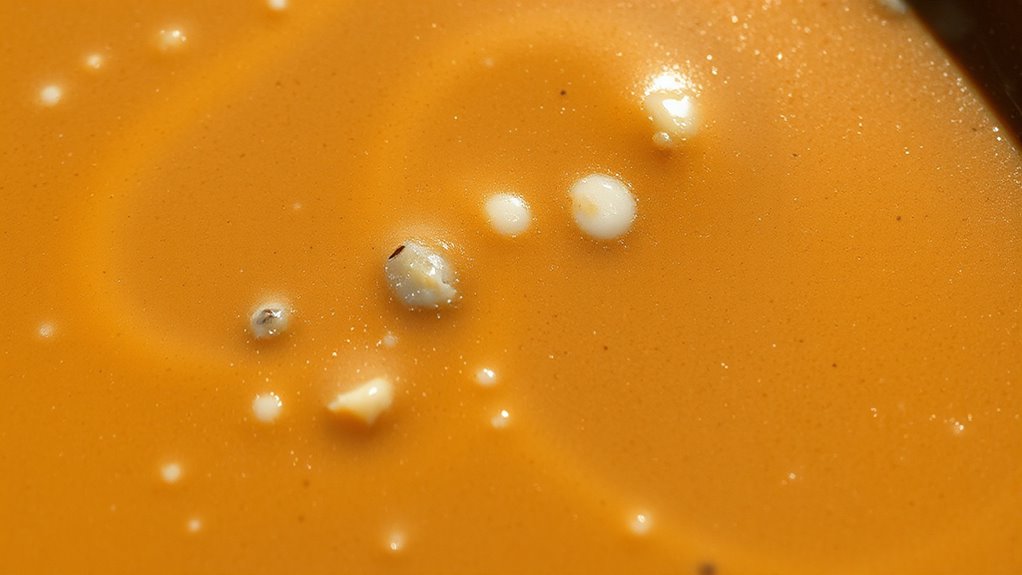
When it comes to your morning coffee, the last thing you want is a bad creamer ruining your vibe!
Keep an eye out for spoilage indicators that can really throw a wrench in your coffee plans. Check for any chunky or curdled textures—yikes! Discoloration is a big red flag, too. If you see mold, just toss it.
For powdered creamers, if it clumps instead of mixing smoothly, that’s a no-go. And don’t forget to inspect the packaging; leaks or unusual colors can hint at trouble.
A good rule of thumb is to choose the best non-dairy creamers that have a longer shelf life to minimize the risk of spoilage.
Trust your visual clues, and you’ll keep your coffee game strong!
Distinctive Smells Indicating Bad Creamer
You’ve checked for visual signs of spoilage, but don’t forget to give your creamer a sniff!
Smell changes can be your best friend in odor detection. If it smells off, toss it!
Here are some distinctive odors to watch for:
- A sour, tangy scent that makes you think of spoiled milk.
- A strange, rancid aroma that’s just plain unpleasant.
- A weird chemical smell that raises red flags.
Trust your nose, coffee buddy! Bad creamer can ruin your favorite cup. In fact, using low acid coffee can help minimize the impact of spoiled creamer on your taste experience.
If it doesn’t smell right, skip the risk and grab a fresh bottle. Your taste buds will thank you later!
Taste Indicators of Spoiled Creamer
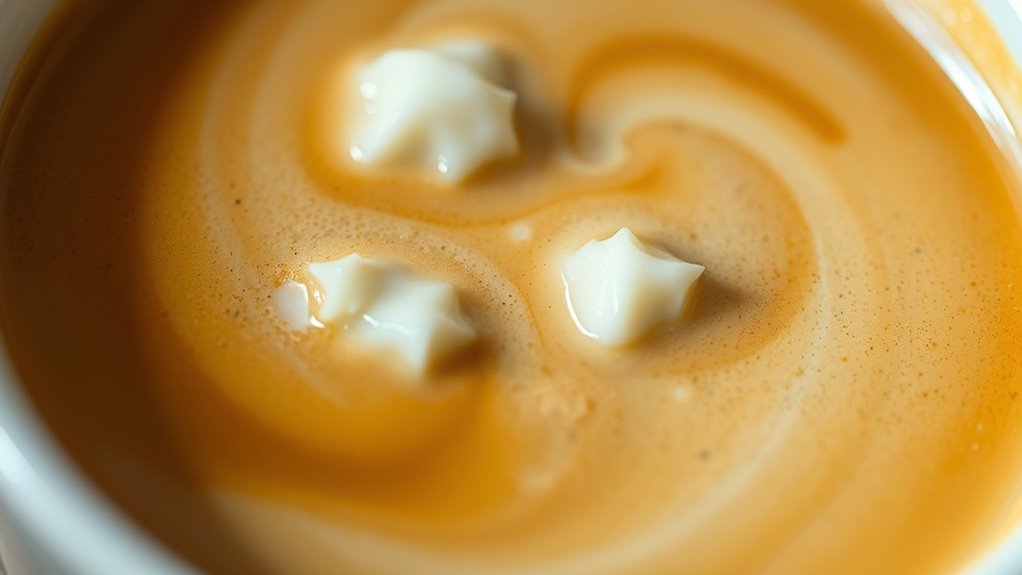
Have you ever taken a sip of your coffee and thought, “What on earth is that taste?”
Well, that could be your creamer waving a red flag at you! If you notice a sour flavor after adding creamer, it’s like a warning sign—fermentation is likely happening. Yikes!
And if you catch a rancid taste, that’s a definite no-go. It can turn your coffee from delightful to disgusting in a heartbeat.
Even a hint of bitterness can spoil the party. So, if your creamer’s playing tricks on your taste buds, toss it out and save your coffee from a gag-worthy fate! Remember, using the right sweetener for coffee can enhance your drink’s flavor and avoid such unpleasant surprises.
Importance of Checking Expiration Dates
Here’s why you should care about expiration date importance:
- Expired creamers might taste like a science experiment gone wrong.
- Bacteria can party in old creamers, leading to some not-so-fun tummy troubles.
- A simple sniff can reveal if it’s still good or a no-go!
- Additionally, high-quality materials in packaging can help in preserving freshness, making it crucial to check for signs of spoilage.
Recognizing Texture Changes in Creamer
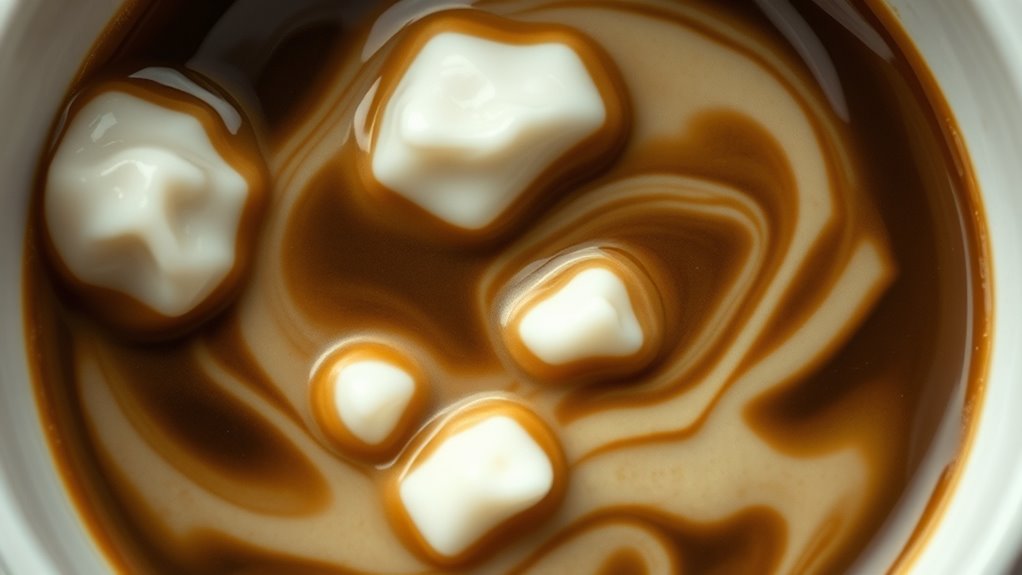
After making sure your creamer’s still good by checking that expiration date, the next thing to keep an eye on is how it looks and feels.
You want that smooth texture, right? If it’s thick or clumpy, that’s a texture problem! Give it a little stir; if it fights back, that’s a red flag!
Keep an eye on those layers; separation means trouble. And if your creamer’s acting all gelatinous or lumpy, it’s time to say goodbye. Additionally, coconut milk creamers are known for their smooth consistency when fresh, making them a delightful addition to your coffee.
Common Discoloration and Mold Issues
When you reach for your coffee creamer, you mightn’t expect a science experiment lurking inside! Spoiled creamer can show some pretty alarming signs, and it’s essential to spot them before you pour.
Here’s what to look for:
- A yellowish or off-white hue indicating bacterial growth.
- Brown or grayish tints from oxidation or mold types.
- Dark spots signaling early mold development.
Additionally, using fresh ground coffee can enhance the overall flavor of your brew, making it even more important to ensure your creamer is fresh. Keep an eye out for these discoloration causes because moldy creamer isn’t just a bummer; it can make you feel pretty crummy too!
Impact of Spoiled Creamer on Coffee Flavor
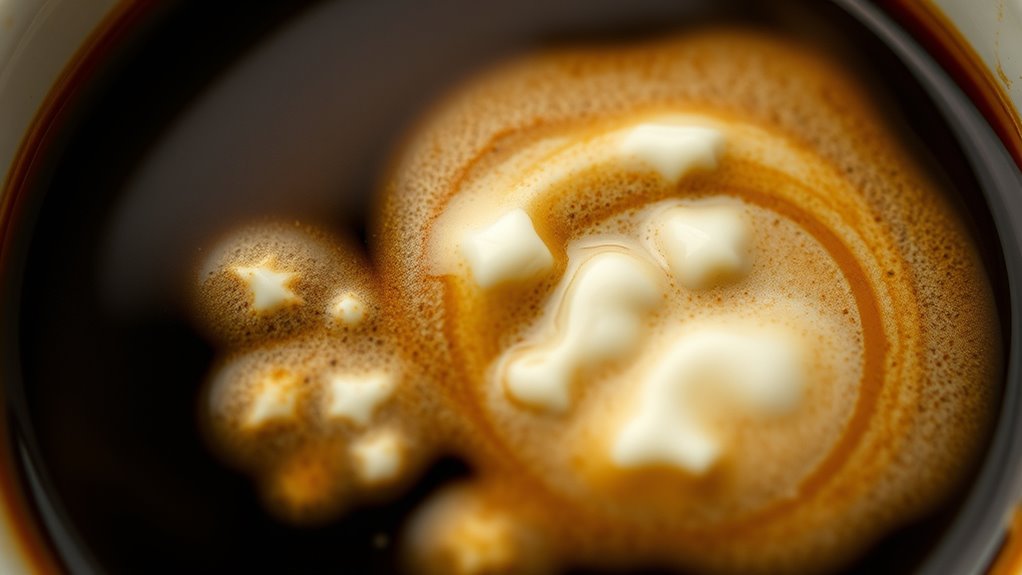
Ever wondered how a little bad creamer can turn your beloved cup of coffee into a bitter disaster? Spoiled creamer can completely mess up your flavor profile, making your drink taste sour or rancid.
You might notice clumps floating around, and that slimy texture? Not a vibe! Instead of that rich, smooth coffee experience you crave, you’re left with an unpleasant mouthfeel and an unpalatable brew.
Plus, that lingering bad taste can haunt your taste buds long after you sip. Interestingly, a clean coffee maker can help maintain the freshness of your creamer and coffee, as vinegar cleaning removes any old residues that could affect flavor. So, next time you reach for creamer, double-check it—your coffee deserves better than a spoiled disaster!
Factors Influencing Creamer Shelf Life
Have you ever opened your fridge, only to find your creamer’s gone rogue? It’s a sad day, my friend!
Here are some factors that can ruin your creamer’s vibe:
- Proper temperature management keeps it fresh.
- Air exposure can make it taste funky.
- Light can spoil it faster than a bad date.
If you can keep your creamer below 40°F, avoid leaving it out for too long, and seal it tightly after each use, you’ll be golden! Additionally, storing your creamer in an airtight container can further extend its shelf life and maintain its flavor.
Best Practices for Storing Creamers
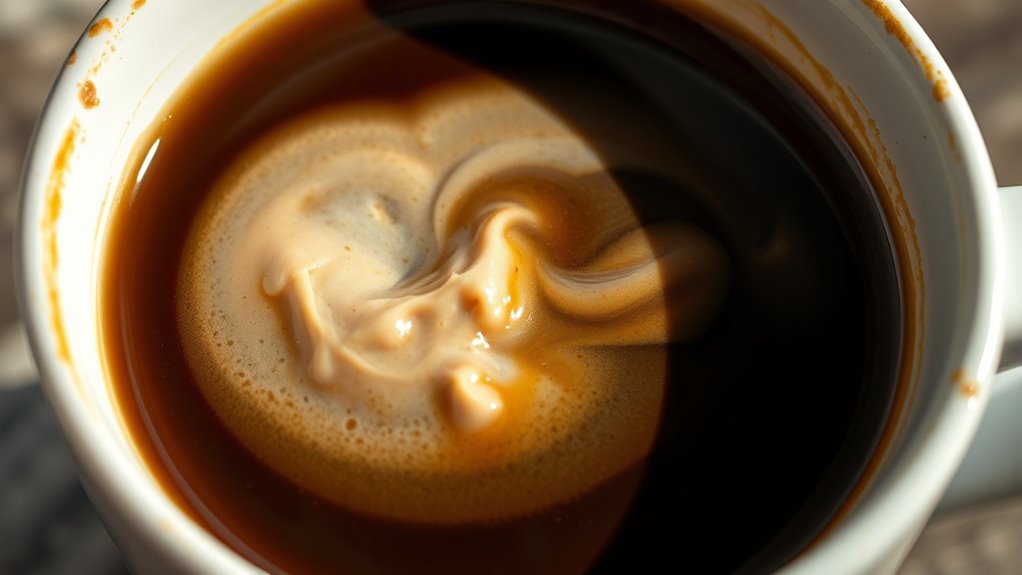
Storing creamers properly is a game changer for your coffee experience, especially if you want to avoid that unfortunate moment when you pour in a curdled mess.
First, always refrigerate liquid creamers right after use; that keeps them fresh. Use clean utensils to minimize contamination, and seal those containers tightly! Keep them away from heat and sunlight.
For powdered creamers, store them in a cool, dry place. Use airtight containers and label them with dates. Don’t forget to check for spoilage—nobody wants a funky creamer surprise! Additionally, consider using reusable coffee filters to enhance your eco-friendly coffee routine while enjoying your perfectly stored creamer.





